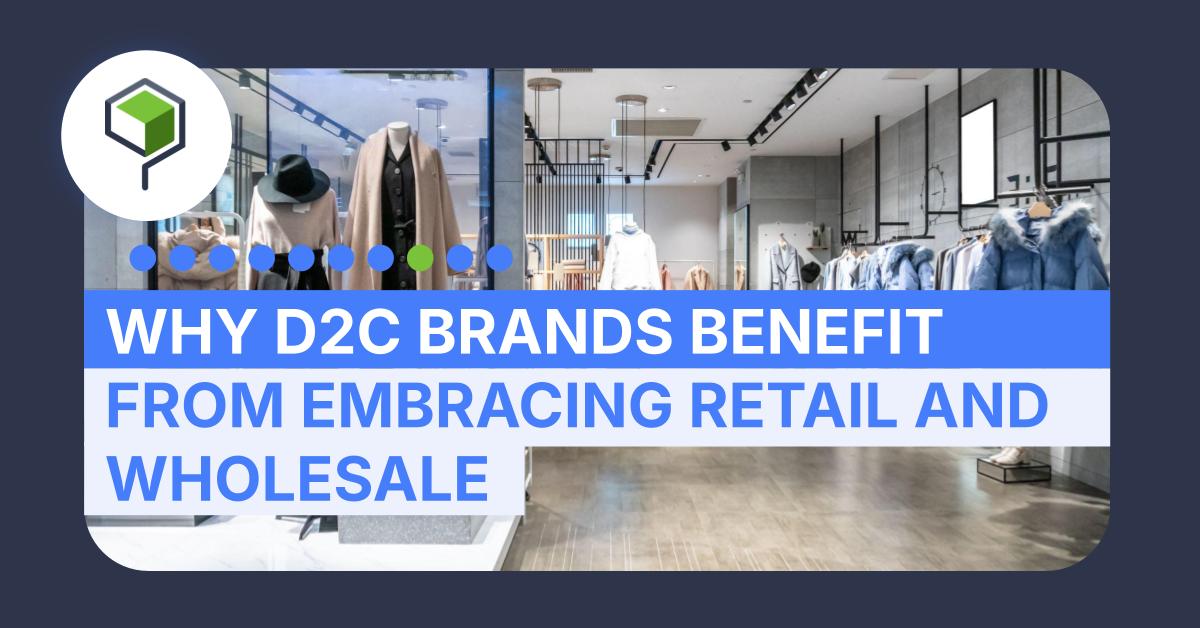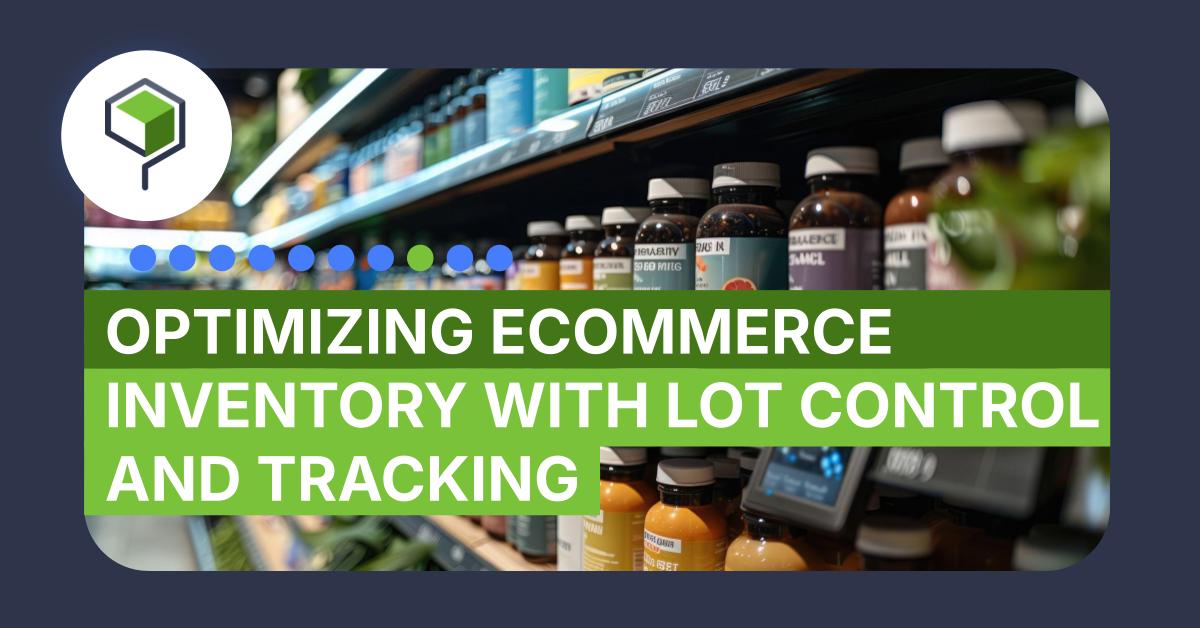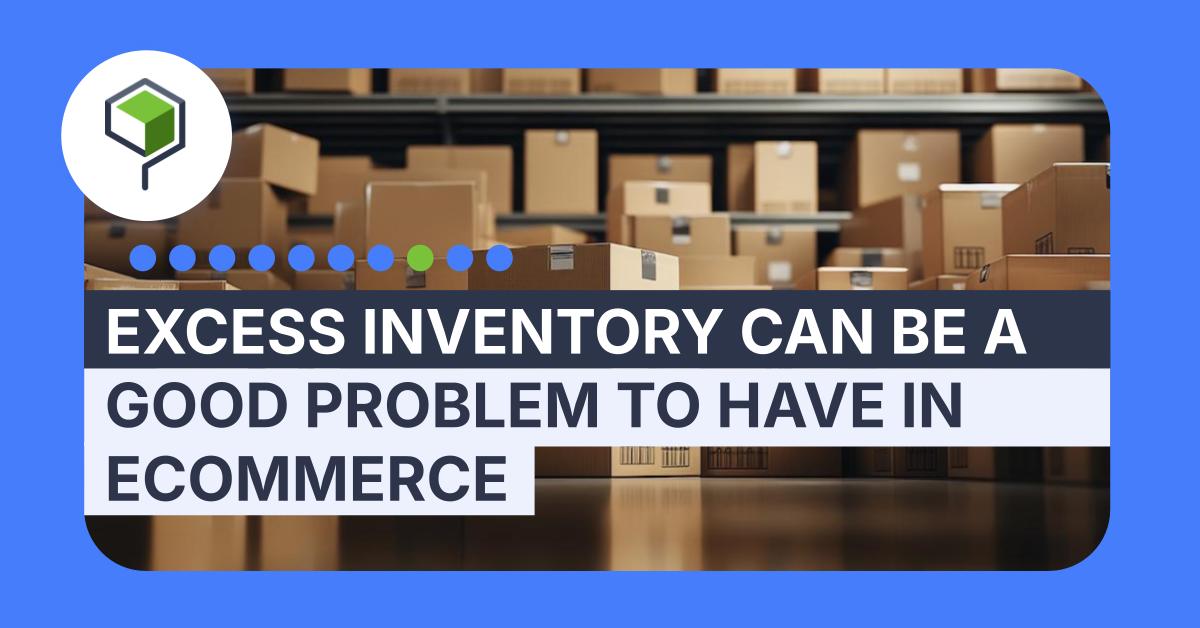Why D2C Brands Benefit from Embracing Retail and Wholesale

Consumer shopping behaviors shift often. For brands, keeping up with where and how their audience is purchasing products can feel like trying to hit a moving target. But one channel always remains…in-store shopping.
Take an iconic luxury handbag, for example. Let’s say the brand already has a huge online following, but they want to expand their reach even further. How do they do it? It only makes sense to put their handbags in more places to get into the hands of more customers.
This is where it can get tricky. Maintaining a hybrid retail strategy isn’t always the easiest, but it’s likely the most profitable route.
We’re diving into how D2C (direct-to-consumer) brands can benefit by adding retail and wholesale sales verticals.
Brands Are Like Trees–the More Branches, the Merrier
People like to feel empowered by doing their own research, on everything, from health solutions to energy drinks, and handbags. According to McKinsey & Company, millennials and high-income earners lead the charge in online shopping. Now, where’s that luxury handbag?
Buyers will search websites to find product offerings and check out pricing. If they aren’t curious about other product options or cost savings, they may stop, select, and complete an order. But that’s not how today’s customer journey always goes.
Your friend may want the same handbag but hopes to get it at the best price possible and wants to try it on in-person. If the handbag company doesn’t partner with third-party retailers, your friend’s purchase may never see the light of day.
Think of the D2C brand as a ‘tree’—the more branches it has, the wider, fuller, and taller it grows, bearing more fruit. By adding retail and wholesale channels, products get greater visibility by meeting consumers where they are in physical store spaces.
Selling Online-Only Has Its Challenges
There’s nothing that says “fast and easy” more than online shopping, though the promise isn’t failproof. The digital experience doesn’t start and end with a brand’s website. There are multiple stops along the way, including competitors, before reaching the online store.
Let’s not forget the Instagram or Facebook feeds, Yelp reviews, and Amazon comparison shopping that could easily distract from a well-intended purchase. And what’s more, would-be customers are concerned about the risks of online shopping.
Building Trust is More Difficult Online
With more transparency required between B2B and B2C transactions comes more risk. IBM reported 46% of all security breaches involved sharing customers’ personal identifiable information, like social security numbers, emails, phone numbers, and physical addresses.
When customers go to onsite stores to get a feel for the products they’re interested in, it’s their way to validate the product’s online information before making a purchase.
It’s important to provide that same level of assurance during the online transaction process. Adding secure payment gateways and threat detection software helps build trust, brand loyalty, and customer retention while reducing fraud.
The Cost of Digital Control
Investments necessary to build resilient ecommerce platforms go beyond addressing security concerns. Remember the “we want it fast and easy”? It starts with the first moments of the online visit.
The ideal ecommerce website is an immersive experience, giving users just enough visual excitement to keep them engaged, but not too much to overload their senses. That means attention-grabbing design, catchy memorable words, special offers, and a seamless glitch-less journey throughout the fulfillment process. All of which can be incredibly costly for brands to maintain.
Ecommerce Logistics Can Be Complicated
Customers will hold online brands accountable for the entire journey, from product research to end-delivery. Managing logistics needs efficiently is the second half of the customer experience, which is why having a reputable fulfillment, distribution and shipping partner keeps ecommerce brands in good standing with their customers.
Without it, all your hard work can quickly go sideways from:
- High-priced fulfillment and shipping costs
- Lost or damaged product
- Poor inventory practices
- Cancelled orders
- Product returns
- Brand-to-consumer disconnect
Online brands grow stronger when they develop a collective community, and branching out through retail gives them more places to flourish.
The Power of Two: Ecommerce and Retail
When it comes to shopping, finding truth to Gen Z’s digital-native reputation is few and far between. It turns out Gen Z prefers to shop in person.
According to Retail Dive, 2024 survey findings from payment company Adyen showed nearly 75% of Gen Z frequents physical stores at least once a week. And like fashion trends, what was once popular deserves a good comeback.
But there’s more good news. Research and market intelligence firm Mordor Intelligence anticipates ecommerce markets to reach $1.3 trillion in online sales this year. Between Gen Z’s shift to in-store experiences and the power of online sales, brands would do well to expand their presence in both markets.
AI and Technology Can Bridge Retail and Ecommerce Gaps
It’s hard to feel confident about doing something you’ve never done before. Building customer confidence in your brand comes by being familiar with the products and having positive experiences with them. But unless customers can easily find your products and create personal experiences about them, you’ll miss opportunities connecting your brands with consumers.
AI and technology can help by enhancing the buyer’s journey.
You’ve probably discovered how digital intuition assists customers with product recommendations based on their personal online search history. Augmented reality (AR) and virtual reality (VR) technologies bring those suggestions to life, allowing customers to try on products from wherever they are, before they buy, enhancing the experience and reducing returns.
Fashion eyewear retail and ecommerce company Warby Parker founded its brand’s key differentiator in the customer experience. By offering Home Try-On, customers can select five eyewear frames to be shipped for free and have five days to decide on what to keep and what to return. Pure genius.
Mark Zuckerberg went one step further, seeing the need to connect his Gen Z audience to retail by integrating the Metaverse into physical stores too.
It’s hard to deny the convenience of online shopping. But in-store browsing can prove more memorable because it’s personal. Together, they serve ecommerce and retail channels alike while magnifying brand impressions and sales.
What About Wholesale?
Doing business in multiple markets takes a lot of planning and understanding how price points affect wholesale and retail purchases. Where retail can personify the customer experience, wholesale channels touch resellers around the clock, giving brands more branches than retail and ecommerce alone.
But get ready to expand on a global scale, because wholesale business can increase sales volume beyond expectation. If the thought of that sends your heart racing, don’t worry, a solid order fulfillment partner can take the weight off your shoulders.
Bulk sales are the cornerstone of wholesale, lowering price per unit and the operational costs of moving your product. By working with backend purchase order settings, brands can dictate bulk pricing and program minimum order quantity settings.
Wholesale companies, like eBay and Alibaba, can manage orders, payment processing, and inventories—done through integrated tech stacks. The data these systems provide gives you and your wholesaler real-time visibility, so you know what products are selling and which ones need a little love.
Retail and Wholesale Fulfillment Pressures
In a perfect product-selling world, buyer and customer journeys are flawless. Retail, wholesale, and ecommerce opportunities run differently, bringing varied opportunities and obstacles.
Each business channel conforms to its own set of regulations, requirements, and refinements. Integrated technology systems keep retail and wholesale channels in check across evolving markets, impacting accounting, purchasing, sales, and distribution, not to mention demand forecasting.
When ecommerce brands go the retail/wholesale route, they lose some of the control that they have when selling online-only. For example, without tracking capabilities, inventory management and response to delays and shipping disruptions increase downtime, product spoilage, and customer complaints.
The success of ecommerce brands expanding into retail and wholesale markets is evident in how well their operations work together. Without optimized system integration, time- and cost-inefficiencies can run rampant making these scalable endeavors risky business.
Hybrid Retail – the New Norm
Just like Gen Z has shown, shopping trends of today favor brands that give customers shopping options, to search and experience the products they love, in ways that mean the most to them.
Adding retail and wholesale channels increases an ecommerce’s brand reach, getting products in front of customers around the world. Through smart system integrations and working with other professional resources and experts, ecommerce businesses can market, sell, and thrive as a hybrid business.
Imagine how much you can learn about your customers by launching new products and testing pricing variables in online and offline channels, with the flexibility and agility to change with consumer preferences, instead of reacting to them.
Want to learn more? Just ask a ShippingTree ecommerce order fulfillment specialist how we support your growth through cost-saving efficiency.



